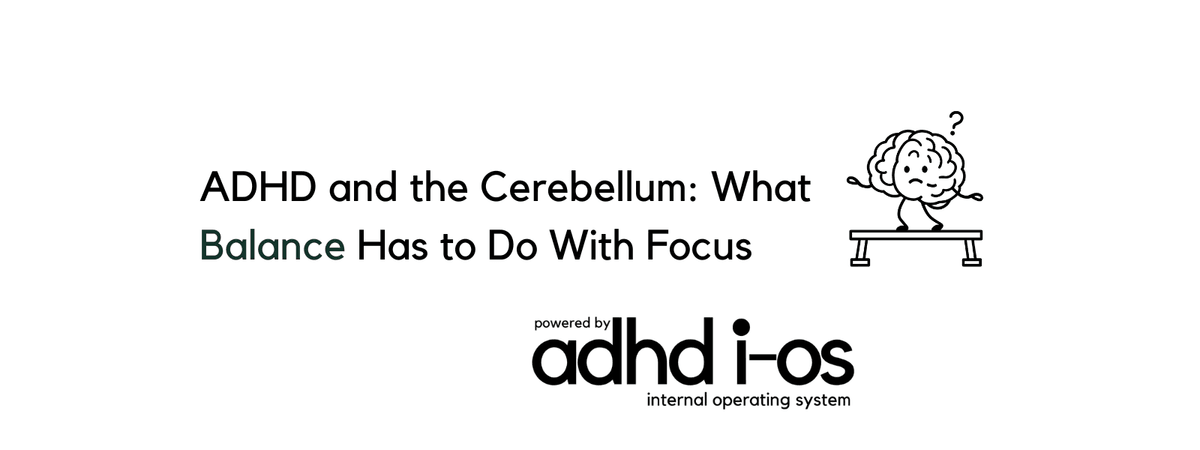ADHD and the Cerebellum: What Balance Has to Do With Focus
ADHD and the Cerebellum: What Balance Has to Do With Focus
ADHD and the Cerebellum: What Balance Has to Do With Focus
Struggling to stay upright and on task? Your cerebellum might be the missing link.
Ever trip over nothing, fumble for the right word mid-sentence, or feel like your thoughts and body are out of sync? It’s not just clumsiness. It could be your cerebellum doing its best with a unique wiring system.
For most people, ADHD usually revolves around attention or impulsivity. But behind the scenes, your “coordination HQ” plays a big part in how smoothly things flow (or how they don’t)!
Let’s take a closer look.

What Is the Cerebellum?
The cerebellum (Latin for “little brain”) is a structure tucked at the back of your brain. It’s known for controlling balance, movement, and coordination.
But researchers now understand it also supports several other functions like attention regulation, timing and sequencing, and emotional processing. Think of it as the brain’s orchestra conductor, making sure thoughts, movements, and emotions stay in rhythm.
How ADHD Affects the Cerebellum
Neuroimaging studies consistently show that individuals with ADHD often have reduced cerebellar volume or activity in the cerebellum, particularly in the posterior region.
That means it’s not just about being “distracted.” It can feel like:
- You're mentally and physically half a step behind
- Your body isn’t syncing with your thoughts
- You’re juggling everything with one hand tied behind your back
The cerebellum is involved in predicting and sequencing tasks, so this lag creates friction in everything from note-taking to social timing.
Curious about sequencing and attention? Read how ADHD impacts working memory.
Real-Life Struggles from Cerebellum Dysregulation
Ever had moments like these?
- Tripping over your own feet—or bumping into doorframes
- Struggling to copy notes while listening to a lecture
- Losing track of the thread in a fast-moving conversation
- Difficulty with handwriting, tying shoes, or using scissors
- Feeling like your reactions are just slightly too slow
These are all coordination issues, and they don’t just live in your limbs. They show up in how you think, feel, and connect too.
How to Support the Cerebellum’s Role
The cerebellum can be trained and supported, especially through movement and pattern. Try these ADHD-friendly strategies:
Movement-Based Learning
Combine body + brain. Walking while reciting notes, dancing through a study session, or using gestures can help reinforce learning.
Break Tasks Into Timed Chunks
Use countdowns (“Focus for 5 minutes”) to help your brain anticipate and organize. Repetition builds rhythm.
Use Rhythm & Repetition
Songs, chants, or tapping can help with memory and sequencing. Repetitive movement enhances cerebellar engagement.
Practice Fine Motor Skills
Drawing, clay sculpting, handwriting, or even stacking games can sharpen coordination.
Choose Coordination-Focused Exercise
Think martial arts, yoga, dance, or balance games—anything that requires your brain and body to work together.
Final Thought
ADHD isn’t just about getting distracted. Sometimes, it’s about how your brain coordinates everything, from footsteps to follow-through.
The cerebellum plays a quiet but powerful role in your sense of timing, balance, and ability to stay “in sync.” And with the right tools, you can strengthen that connection.
Want more science-backed support built for your brain?
Join the adhd i-os Community for tips, visuals, and tools designed for how your neurodivergent brain actually works!

